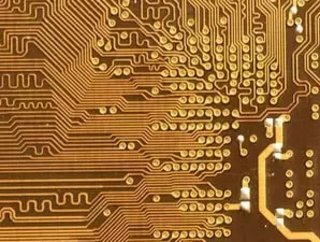'Missing piece’ quantum computing breakthrough

Scientists from the University of New South Wales in Sydney, Australia, have announced the discovery of a major breakthrough in quantum computing.
So far, quantum scientists and computer engineers have only been able to use proof-of-concept models of quantum processors that work with just a few ‘spin qubits’, which are the quantum equivalent of a bit. But new research just published in Science Advances has identified a technique which researchers claim will enable them to control millions of these qubits. The team of scientists involved consider this technique as the ‘missing piece of the jigsaw’ in quantum computing architecture.
In a traditional computer, a bit - the single unit of information, either a 0 or a 1 - is stored in the electronic circuit of the computer itself, specifically in the capacitor of a memory cell, with the value depending on whether the capacitor is charged or discharged. Spin qubit quantum computers replace this capacitor with a single quantum particle - the electron - and its "spin" value.
Explaining the quantum computing method
Dr Jarryd Pla, a researcher at the University of New South Wales, explained: "Up until this point, controlling electron spin qubits relied on us delivering microwave magnetic fields by putting a current through a wire right beside the qubit. This poses some real challenges if we want to scale up to the millions of qubits that a quantum computer will need to solve globally significant problems, such as the design of new vaccines.”
"First off, the magnetic fields drop off really quickly with distance, so we can only control those qubits closest to the wire.
"That means we would need to add more and more wires as we brought in more and more qubits, which would take up a lot of real estate on the chip."
The issue is that these chips need to operate at extremely cold temperatures, below -270C, and introducing more wires would compromise the temperature of the chip and interfere with the reliability of the qubit.
"So we come back to only being able to control a few qubits with this wire technique," Dr Pla said.
Quantum computing breakthrough
The breakthrough came in redesigning the entire structure of a chip. Instead of having thousands of control wires running across the thumbnail-sized piece of silicon, the team generated a magnetic field from above the chip which can manipulate all of the qubits simultaneously. This method was first mooted back in the 1990s, but the new research is the first practical way to make this work.
The wire next to the qubits was removed and then there was the novel way to deliver microwave-frequency magnetic control fields across the entire system. Researchers then added a crystal prism called a dielectric resonator above the silicon chip, which can be used to focus the wavelength of microwaves down into a smaller size.
The first innovation is that scientists don't have to put in a lot of power to get a strong driving field for the qubits, which means not much heat is generated. The second is that the field is very uniform across the chip, so millions of qubits all experience the same level of control.
However Dr Pla went on to add "there are engineering challenges to resolve before processors with a million qubits can be made.”
- OpenText’s Muhi Majzoub: Engineering Platform Growth with AIEnterprise IT
- OpenText CEO Roundtable: The Future of Safe Enterprise AIDigital Transformation
- OpenText AI: Empowering Businesses in Information ManagementDigital Transformation
- Microsoft in Japan: $2.9bn Investment to Boost AI & CloudCloud & Cybersecurity






